While I am usually an omnivore, I have been playing around with a vegan diet for the past couple of months. Mostly I haven’t eaten meat, dairy or gluten, and I have to say I haven’t really missed those ingredients on my plate. Occasionally I’ll splurge on a piece of goat cheese, or sneak in a piece of bread and butter and savor it mightily, but because my digestion thanks me when I don’t entertain these items on a daily basis I’ve stuck with it.
Many months ago, I booked a spot on an Indian cooking class at the SF Cooking School, which has incidentally just celebrated its first birthday, and while I love cooking and eating vegetables I was feeling ready to spice up my cooking by the time the class came around.
On a foggy, windy night in San Francisco, a group of 20 of us gather in the shiny, brightly lit kitchen on Van Ness and Turk. An interesting cross-section of the city’s inhabitants meander outside. Having battled my way past a woman sporting a bright red coat and underwear, I’m greeted by our instructor, Meghna, who runs her own cooking school, Crimson Kitchen, in Noe Valley in San Francisco. She’s a warm, cheery woman who moved to the USA when she got married. She explains to us that we are going to be cooking mostly North Indian food which, due to the region’s history, draws on Muslim, Persian and Afghanistan influences.
The conversation turns to Indian dishes we’re familiar with and I’m surprised to learn that chicken tikka masala isn’t really an Indian dish, but a creation of the British who took chicken tikka (grilled chicken) and added a creamy sauce to it. Anyway, back to the principles of Indian cooking. Not surprisingly, at the heart of every Indian cook’s kitchen is a spice box. Often a round tin, it contains individual containers of all the things you use on a daily basis including cumin seeds – whole and ground are different so be sure to use what the recipe calls for, coriander powder, chili powder and fenugreek seeds (which have therapeutic powers).
Garam masala is a mixture of spices and each family creates its own special combination keeping the actual ingredients and ratios a closely guarded secret. It often contains cardamon, black pepper, cinnamon, nutmeg and bay leaves. Meghna passes around her own version and encourages us to smell it and try to distinguish the ingredients (I find it impossible!). Its smell is pungent, warm and inviting. She warns us to keep garam masala in its own sealed container as it will flavor anything around it and is typically added at the end of cooking to punch up the flavors.
There’s an ambitious menu for us to prepare during our four hour class: vegetable pakoras with chutney, Latpata chicken, malai kofta (cheese and potato fried balls), spinach raita, matar pulao (rice), aloo gobi (potatoes and cauliflower), two types of bread (roti and poori) and ghee. We split up into pairs, and despite my non-meat eating ways, I opt to prepare the chicken thinking there’d be plenty to learn about how to make a tender, juicy meat dish.
We start by skinning the chicken and cutting up the thighs and breasts. Meghna reminds us that using the dark meat and keeping it on the bone will make for a deeper flavor and keeps the meat moist. We caramelize the onions with garlic, ginger and some of the spices. The process takes at least 30 minutes, if not more. Once they’re ready we add the chicken pieces and the rest of the spices, cover with a tight lid and let it cook over a medium heat for a good 45-60 minutes until the meat is cooked through and tender.
By now we’re starving and thankfully Team Pakora is all set so we devour these wonderful battered vegetable delights like they’re going out of fashion. Cooked in a chickpea flour batter, my all-time favorite bite is a simple spinach leaf transformed into something warm, crispy and exotic. Turns out the trick to getting the batter just right is making sure it’s not too hot, otherwise the batter burns without turning crisp and the veggies inside don’t cook. I eat more than my fair share doused in the wonderful chutney, and could have called it a night right then.
While our chicken simmers on the stove (or rather, on the complicated induction top which is hard to operate), others make their dishes and Meghna demonstrates how to make ghee. The main tip is to make sure the butter doesn’t burn and watch for the separation of the milk solids from the oil. Ghee is a really pure form of fat and digestible even to those who have a hard time with dairy.
Just as you can’t eat bread without butter, so roti enjoys a little drizzle of ghee. But first we have to make the unleavened bread. Wholewheat flour and water is all it takes but getting the proportions right so you have a nice elastic dough is the trick. I show Meghna my slightly crumbly dough and she tells me “Don’t be afraid! Add more water. And if you add too much, you can always add more flour. You can’t get it wrong.” Assuring her that I have no fear, I follow her directions adding water with wild abandon and my dough becomes much more malleable.
Once rolled out, the tortilla-style rotis are heated in a dry frying pan before being given a final “torch” over the open flame which somehow induces them to puff up with steam. Nice party trick.
Once our dishes are all prepared (and I’ll share recipes in the near future) we gather to admire the fruits of our labor, and just like any sane group of Westerners, the only way we know how to do this is by whipping out our smartphones and Instagraming the occasion. I think we all agree that if there’s no Instagram memento it’s like it never happened.
Despite having a belly full of pakoras, I pile my plate up high with the delicious, fragrant steaming food. I love the aloo gobi (I’m a sucker for cauliflower of any description), the cheesy potato balls are served with a wonderful tomato gravy and while apparently complicated to make were definitely worth someone else’s effort. The spinach raita (made by yours truly and my partner) was a wonderful antidote to the spices, which in any case were subtle and complex, not fiery or overpowering. All in all, it was a terrifically fun evening made all the more so by Meghna’s charm and knowledge which she was so keen to share with us.
For more information about cooking classes with Meghna contact her here.
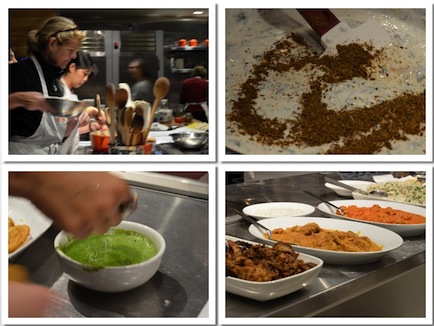
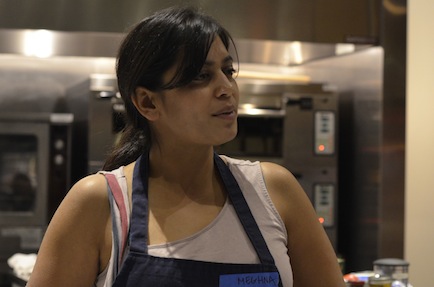
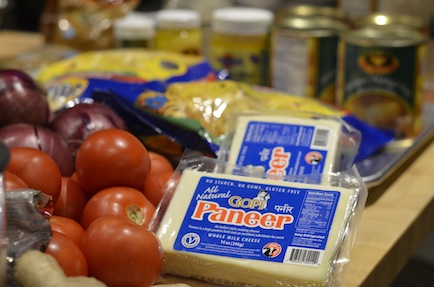
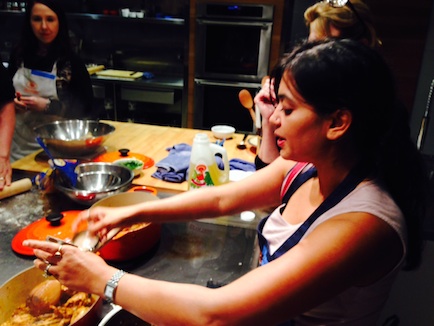
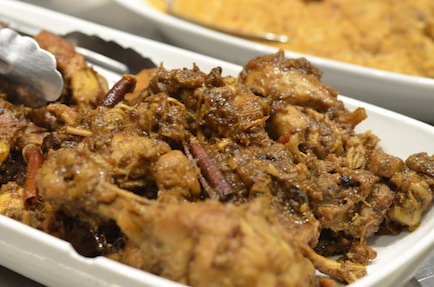
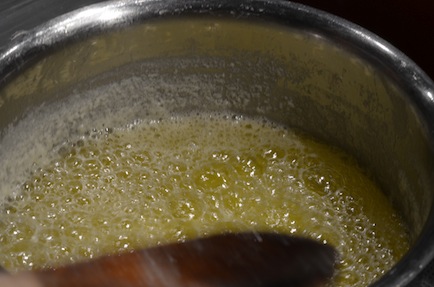

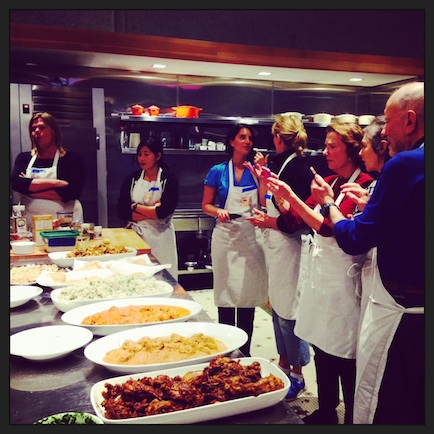
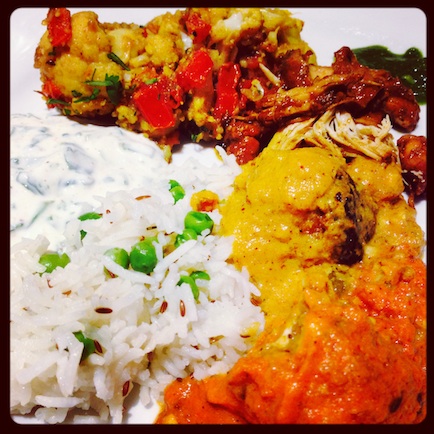

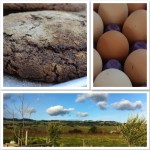
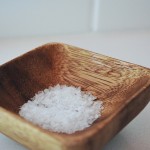
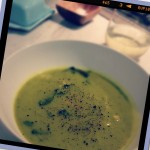
Alice, your writing literally makes my mouth water, and the photos get my stomach growling. I share your affection for cauliflower, so please do post that recipe, in particular.
Thank you John! I will post two cauliflower recipes soon: one for aloo gobi and another for beet and cauliflower soup – stay tuned!
Very envious, I love, love, love great Indian food!